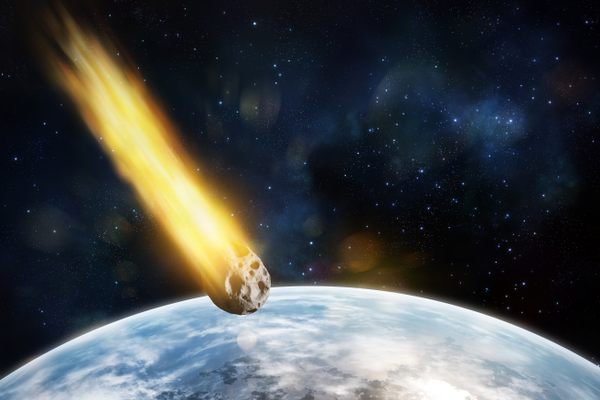The Crab Nebula Is Ready for Its Close-Up
Five telescopes were used to make a special new image, and only one of them is on Earth.

In 1054, Chinese astronomers observed a star that glowed particularly bright for two years and then winked out. We know now that they were looking at a supernova, the terminal explosion of a star, when its core collapses under its own gravity. The remains of that cosmic explosion, the Crab Nebula, some 6,500 light years away from Earth, are no longer visible to the naked eye. The nebula was first identified in 1731 by the doctor and astronomer John Bevis, and we’ve been watching it ever since—but it’s never looked quite like this.
The latest image of the Crab Nebula was assembled by merging views from five different telescopes—four in space and one here on Earth—that cover almost the entire electromagnetic spectrum, from radio waves to X-rays. Data from the Very Large Array (radio), Spitzer Space Telescope (infrared), Hubble Space Telescope (visible), XMM-Newton Observatory (ultraviolet), and Chandra X-ray Observatory (X-ray) were each assigned to a visible color and then overlaid to reveal the nebula in unprecedented detail.
The bright spot at the center is a pulsar, a tiny neutron star that rotates rapidly (30 times per second), sending out electromagnetic beams like a lighthouse on overdrive. It is surrounded by a swirl of particles caught up in the pulsar’s magnetic wind, followed by the remnants of the supernova, and then finally material ejected from the star before it exploded. The comparative data are helping scientists understand the structure and physics of the nebula, which is three light years across.
“Comparing these new images, made at different wavelengths, is providing us with a wealth of new detail about the Crab Nebula,” said Gloria Dubner of the Institute of Astronomy and Physics at the University of Buenos Aires in Argentina, who is leading the study, in a NASA release. “Though the Crab has been studied extensively for years, we still have much to learn about it.”



















Follow us on Twitter to get the latest on the world's hidden wonders.
Like us on Facebook to get the latest on the world's hidden wonders.
Follow us on Twitter Like us on Facebook